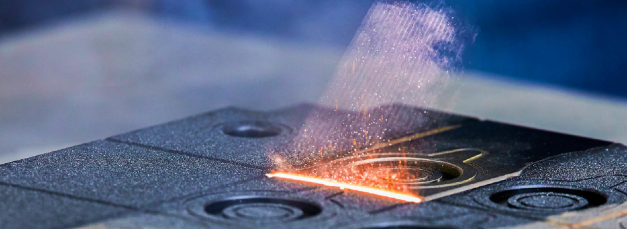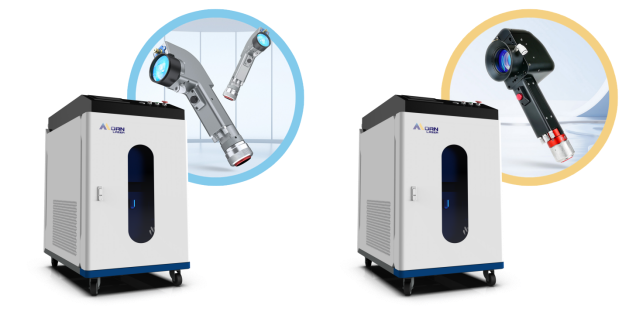-
Product
-
Fiber laser cutting machine
-
Profile Steel/ H-Beam Laser Cutter
high efficiency | high-performance | high quality -
Full Cover Fiber Laser Cutting Machine
supreme configuration | high precision | safe & pollution-free -
Sheet fiber laser cutting machine
tailor-made machine | efficiency boost -
Fiber Laser Bevel Cutting Machine
one-shot bevel | efficiency boost | streamlined process -
High precision fiber laser cutting machine
High precision | small footprint | fully enclosed -
Four-chuck Tube Cutting Lasers
truly zero-tailing | low cost per part | auto loader -
Three-chuck Tube Laser Cutting Machine
top production output | low cost per part | extremely short tailing -
Two-chuck Tube Laser Cutting Machine
top production output | low cost per part | extremely short tailing -
Full Enclosed Fiber Laser Cutting Machine
Integrated design saves installation time and shipping costs. - flexible processing | continuous cutting | efficient production
-
Fully Automatic Loading & Unloading Laser Cutting Production Line
intelligent production | optimizing factory space | reduce labor costs -
Sheet and Tube Fiber Laser Cutting Machine
supreme cost-effectiveness | dual-use laser | space-saving
-
-
Fiber laser welding machine
-
Air-cooled Portable Laser Welding Machine
more flexibility | easy to use | cost effective -
Automatic laser welding machine
fine welding seam | boosted efficiency -
Integrated fiber laser welding machine
instant welding | easy to operate & move -
Handheld fiber laser welding machine
long distance welding | multi-welding modes
-
- Fiber laser cleaning machine
- Bending Machine
-
Fiber laser cutting machine
- Solutions
- Why Morn Laser
- Price
- Contact
- VR
Menu
X- home
-
Product >
-
The Impact of Laser Cleaning Machines on Industry: Driving Smart Manufacturing and Green Production
2025-03-29As global manufacturing moves toward efficiency, environmental sustainability, and intelligent automation, fiber laser cleaning machines are emerging as a key driving force in industrial cleaning. Compared to traditional methods such as chemical cleaning and sandblasting, laser cleaning not only enhances cleaning quality but also brings profound transformations across multiple industries.
1. Enhancing Production Efficiency and Enabling Smart Manufacturing
In modern manufacturing, production efficiency directly impacts a company’s market competitiveness. The application of laser cleaning technology has enabled automation and precision in the cleaning processes of industries such as metal processing, aerospace, mold manufacturing, and automotive production.
- Faster Cleaning Speed: Compared to traditional methods, laser cleaner can quickly remove surface contaminants, oxidation layers, and grease, significantly reducing downtime and improving overall productivity.
- More Precise Cleaning Results: For precision components and complex structures, laser cleaning provides selective cleaning, preventing damage to the substrate and enhancing product quality.
- Non-Contact Cleaning to Reduce Wear: Traditional cleaning methods may cause abrasion to material surfaces, whereas fiber laser cleaner is non-contact, effectively extending the lifespan of equipment and components.
2. Eco-Friendly and Driving Sustainable Development
With increasingly strict environmental regulations, pollution-free industrial cleaning technologies have become a key focus for enterprises. Laser cleaning machines stand out due to their chemical-free, wastewater-free operation, aligning with modern companies' sustainability goals.
-Reducing Chemical Pollution: Traditional cleaning methods rely on strong acids and alkalis, while laser cleaning uses only high-energy laser beams, eliminating the need for chemicals and preventing secondary pollution.
-Lower Energy Consumption: Compared to high-energy-consuming methods like sandblasting and ultrasonic cleaning, laser cleaning is more energy-efficient, supporting the industrial trend of energy conservation and emission reduction.
-Minimizing Manual Intervention: With intelligent control systems, laser cleaning equipment can operate automatically, reducing the need for manual labor and enhancing workplace safety.

2. Wide Application, Driving Industry Upgrades
The application scope of laser cleaning machines is continuously expanding, accelerating the modernization of traditional processes across multiple industries.
Metal Manufacturing & Processing: Effectively removes oxidation layers, oil stains, and coatings before and after welding, improving weld quality. Widely used in steel, mold, and casting industries.
Aerospace: Precisely removes coatings, oxides, and corrosion layers from aircraft components, ensuring compliance with high industry standards.
Automotive Manufacturing: Plays a crucial role in engine component cleaning, coating removal, and welding pretreatment, enhancing production quality and efficiency.
Railway & Ship Maintenance: High-precision cleaning technology makes laser cleaning an ideal solution for paint removal and hull rust removal in railway and maritime maintenance.
Laser cleaning machines are not just an innovation in industrial cleaning—they are also driving manufacturing toward greater efficiency, sustainability, and intelligence. From boosting production efficiency to promoting green manufacturing, laser cleaning is gradually transforming traditional industrial cleaning methods, making it an essential part of future factories. As market demand grows and technology advances, laser cleaning technology is set to unlock even greater potential worldwide.
If you're interested in laser cleaning machine prices, feel free to contact us anytime!
- Office Address:
- 17F, Building 5, Qisheng Mansion High-Tech Zone, Jinan, Shandong 250101, China
- Email: info@mornlaser.com
- Mobile/WhatsApp/WeChat: +86 151 6916 6350
CONTACT USCopyright © 2008-2022 Morn Laser All Rights Reserved.![]() Get a Quote
Get a Quote
![]() Get a Quote
Get a Quote
Cookies
We use cookies to improve our services and remember your choice for future visits. By clicking "Accept cookies", you consent to the use of cookies on this website.
Read our Privacy Policy
Get a Quote x
![]()









